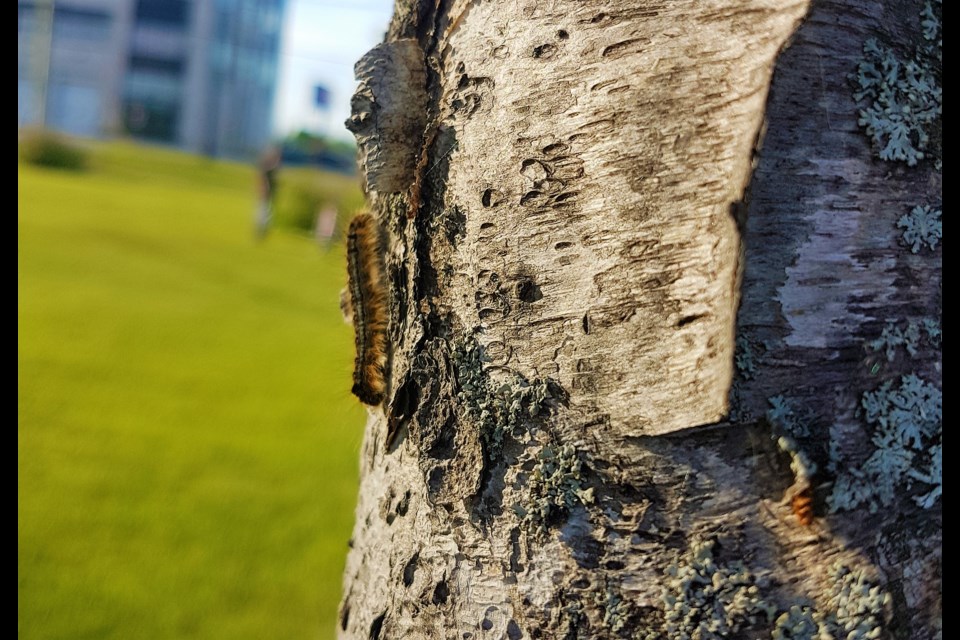Over the weekend, people in Timmins and other parts of Northern Ontario, witnessed the sudden appearance of an inch and half long caterpillar black, with tiny red dots on its back.
Some were noticed on birch trees in Hollinger Park and some even were running along the concrete curb behind the Timmins Library Building, all the way up the southwest wall.
They seemed to have come from nowhere and suddenly they were everywhere in Timmins over the weekend.
"There nothing to worry about," said Mark Joron, a forestry technologist with Millison Forestry, a Timmins company which specializes in forest management.
"The tent caterpillar population grows in cycles, every 7 to 10 years it explodes," Joron explained. "The infestation lasts three years but is not that wide spread."
Although Joron had been getting a lot of calls about the tent caterpillar in the Timmins area, he says he has not see the mob of caterpillars in his daily work.
Most forest management experts believe the best way to handle the infestation caused by the population boom, is to let nature balance itself out.
Many like Joron view the sudden population explosion as part of the natural cycle that will eventually even itself out.
"There a great source of food for the area birds," Joron said.
The tent caterpillars get their name because some species, like the eastern tent caterpillar, lay their eggs in gossamer tent-like meshing, that grows between tree branches.
But the forest tent caterpillar, the one that has been seen around Timmins, doesn't actually have that tent like structure. Rather they lay their eggs in sacks that are attached to the tree.
"They may have some impact on the older larger tree," said Joron. "Generally they do not have a large impact on forestry in Northern Ontario."
"It's funny cause over the weekend, I was listening to a radio interview with a forestry expert from Science North in Sudbury," Joron said. "The spokesperson reminded the reporter that 10 years ago, he was asking the same questions about the tent caterpillars, and 10 years from now, he likely would be be back to ask those same questions again."
You can almost set your watch to the 10-year cycle.



